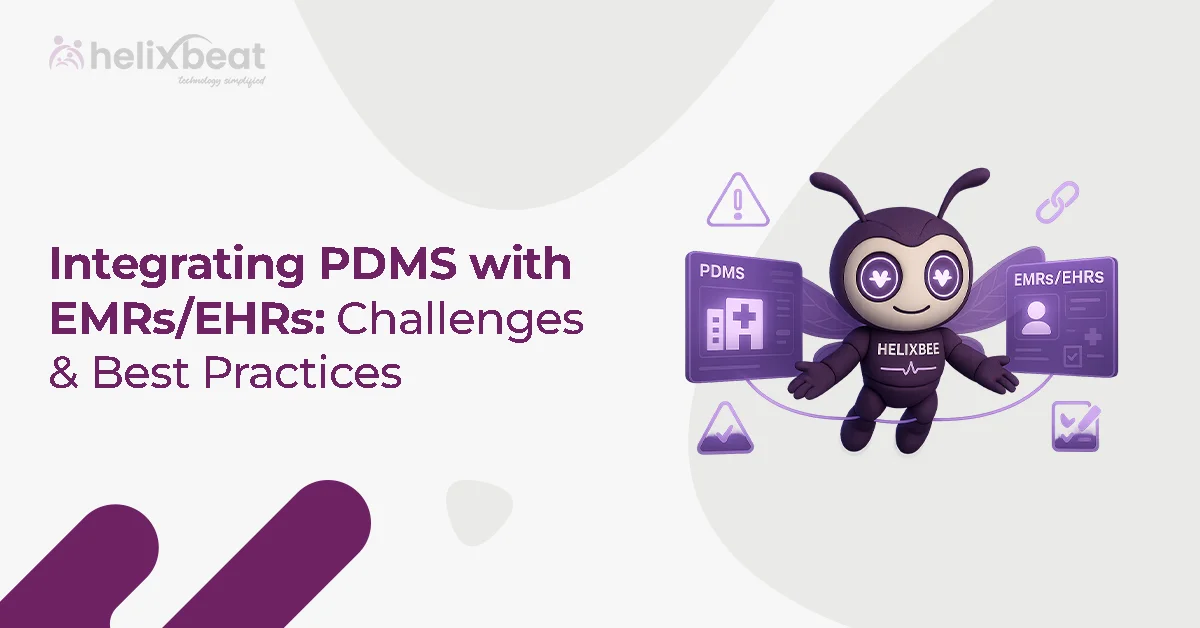Mobile app testing services has become a cornerstone in the development of mobile applications. As apps become more complex and user expectations rise, ensuring a seamless user experience across different devices is crucial.
In 2025, mobile automation testing tools and frameworks have developed, offering smarter, faster, and more accurate solutions for app testing.
In fact, 60% of mobile app developers now rely on automation for testing, streamlining their workflows and accelerating app delivery. This blog will guide you through the most effective mobile app automation testing tools, their functions, and how they can optimize the testing process.

Table of Contents
What is Mobile Automation Testing?
Mobile automation testing involves using specialized tools and frameworks to automate the process of testing mobile apps. It enables developers and testers to simulate user interactions and evaluate the app’s functionality, usability, and performance without requiring manual intervention. Automation enables the execution of repetitive tests on various devices and operating systems, ensuring consistency and efficiency.
Different Types of Mobile Automation Testing
- Functional Testing : Functional testing ensures that the mobile app’s features work as intended. It involves verifying whether the app’s user interface (UI) and overall functionality meet the expected standards.
- Regression Testing: With each new update or feature added to an app, regression testing ensures that no existing functionality is compromised. It helps maintain app stability and reliability across various versions.
- Integration Testing: Integration testing focuses on verifying that different modules of the mobile app work together seamlessly. It helps identify issues that may arise when different components interact.
Top 5 Mobile Automation Testing Tools and Frameworks
Differentiation Table
| Tool/Framework | Platform Support | Features | Best For | Advantages | Disadvantages |
| Appium | Android, iOS, Hybrid | Open-source, supports multiple languages (Java, Python, JavaScript), cross-platform testing | Native, hybrid, and mobile web apps | Supports multiple platforms (Android, iOS) Cross-platform testing with a single API | Slower execution time compared to native tools Complex setup for beginners |
| Selenium | Android, iOS (via Appium) | Integrates with Appium for mobile testing, supports various browsers | Web and mobile automation | Widely used in the industry Great for cross-browser testing Supports multiple languages | Limited mobile-specific features Requires additional tools (like Appium) for mobile testing |
| Espresso (Android) | Android | Fast, lightweight, integrates with Android Studio, UI testing | UI testing for Android apps | Native testing for Android apps Fast execution and performance Seamless integration with Android Studio | Only works for Android Limited to UI testing, not suitable for full app testing |
| XCUITest (iOS) | iOS | Official framework by Apple, integrates with Xcode, supports UI testing | UI testing for iOS apps | Optimized for iOS Official Apple support Tight integration with Xcode | Only for iOS testing Limited support for non-UI aspects of testing |
| Detox | Android, iOS (React Native) | End-to-end testing, real-device testing, integrates with CI/CD pipelines | React Native mobile apps | Fast, real-device testing Suitable for React Native apps Integrates with CI/CD pipelines | Limited to React Native Complex setup and debugging |
1. Appium
Right Time to Choose
Appium is the best choice when you need to test mobile applications across both Android and iOS platforms simultaneously. If you want a tool that supports multiple languages like Java, Python, and JavaScript and are looking for an open-source, cross-platform solution, Appium is ideal. It’s especially useful when your team needs to run mobile web tests as well.
Process
- Set up Appium server and dependencies.
- Write test scripts in your preferred language.
- Use Appium’s Inspector to locate UI elements for automation.
- Execute tests on real or emulated devices.
- Review results through Appium logs and reports.
Application
Appium is widely used in scenarios requiring cross-platform testing, such as:
- Testing native mobile apps across both Android and iOS.
- Automating mobile web apps to ensure they perform as expected on various browsers.
- Testing hybrid apps where the frontend is developed using web technologies, but the app is wrapped in a native shell.
2. Selenium
Right Time to Choose
Selenium is ideal when your project requires both web and mobile testing, particularly when you want to integrate with existing frameworks like Appium. It’s most effective when your application runs on different browsers and you need consistent automation across both mobile and web platforms.
Process
- Install Selenium and Appium (for mobile testing).
- Write cross-browser testing scripts in the language of your choice (Java, Python, etc.).
- Integrate Appium for mobile testing support.
- Execute tests on mobile and web applications.
- Generate reports using Selenium’s built-in tools or third-party integrations.
Application
Selenium works well in:
- Cross-browser testing, ensuring your web and mobile apps work seamlessly across different browsers and devices.
- Web-based mobile automation when paired with tools like Appium.
- Automated regression and integration tests for both mobile and web.
3. Espresso (Android)
Right Time to Choose
Espresso is the right choice when you are exclusively developing for Android and need a fast, reliable testing framework integrated into Android Studio. It’s perfect for teams that want to focus solely on testing the UI and user interactions within the app without the need for cross-platform support.
Process
- Set up Android Studio with Espresso dependencies.
- Write test cases for your app’s UI components.
- Execute tests in real-time on physical devices or emulators.
- Review results within Android Studio’s test environment.
Application
Espresso is best suited for:
- UI testing within Android apps.
- Automating interactions such as clicking, scrolling, and swiping to verify the functionality of app features.
- Ensuring smooth, responsive interfaces in apps that require heavy user interactions.
4. XCUITest (iOS)
Right Time to Choose
XCUITest should be your go-to framework if you’re developing exclusively for iOS and want a tool optimized for seamless integration with Xcode. It’s the right choice when you need fast, reliable UI testing on iOS devices and want official support from Apple.
Process
- Set up Xcode and enable XCUITest framework in your project.
- Write UI test scripts using XCUITest APIs.
- Run tests on real devices or simulators within Xcode.
- Analyze test results and refine your app based on feedback.
Application
XCUITest is best used for:
- Automating UI tests specifically for iOS applications.
- Testing the integration of different app elements on iOS devices.
- Running performance checks within Xcode for early-stage testing.
5. Detox
Right Time to Choose
Detox is the best choice when you are working with React Native apps and need a tool that can perform end-to-end testing on both Android and iOS. It’s ideal when you want to test real-device interactions and integrate testing with a continuous integration/continuous deployment (CI/CD) pipeline.
Process
- Install Detox and configure it with your React Native project.
- Write test cases that simulate real-world user interactions.
- Run tests on physical devices or emulators.
- Integrate Detox with your CI/CD pipeline for automated testing with every code change.
Application
Detox is perfect for:
- React Native mobile app testing, ensuring smooth performance across both Android and iOS.
- End-to-end testing, simulating real user interactions and validating app features.
- Continuous testing in the CI/CD pipeline to ensure consistent quality in every build.
Easy Step-by-Step Guide to Mobile App Automation Testing
1. Set Up the Testing Environment
Install the necessary tools (e.g., Appium, Espresso, XCUITest) and ensure your system is compatible. Set up emulators or connect real devices for testing.
2. Write Test Scripts
Create test scripts that simulate user actions, like clicking buttons and navigating. Use the appropriate language for your framework (e.g., Java for Appium, Espresso).
3. Execute the Tests
Run your test scripts on real devices or emulators, monitoring the execution for any issues.
4. Analyze Results and Refine
Review the test results for errors. Refactor the app as needed and rerun the tests to confirm fixes.
Advantages of Mobile App Automation Testing
Mobile app automation testing increases efficiency by reducing testing time, ensures consistent results, enhances coverage across devices, and ultimately lowers long-term costs.
- Faster Execution: Automated tests run much faster than manual testing, allowing you to cover more test cases in less time.
- Consistency: Automated tests are executed the same way every time, eliminating human error and ensuring consistent results.
- Cost-Effective: While the initial setup might require investment, automation reduces long-term costs by minimizing the need for repetitive manual testing.
- Cross-Platform Testing: Automation tools can test apps on multiple devices and operating systems simultaneously, ensuring broader compatibility.
- Better Coverage: Automation allows for extensive testing, covering more scenarios, including edge cases, that might be missed during manual testing.
Effective Techniques for Automated Mobile App Testing
- Parallel Testing: Run tests on multiple devices and platforms simultaneously to speed up the testing process and ensure compatibility across different environments.
- Data-Driven Testing: Use multiple data sets to validate how the app performs under various scenarios, ensuring broader coverage and identifying issues with specific inputs.
- Continuous Integration (CI) Testing: Integrate automated testing into the CI/CD pipeline to run tests automatically whenever new code is committed, ensuring fast feedback on every build.
- Performance Testing: Include tests for app performance (e.g., load times, responsiveness) to ensure that the app performs well under different conditions, such as high traffic or low connectivity.
- Test on Real Devices: While emulators and simulators are useful, testing on real devices provides more accurate results by simulating real-world conditions like device-specific performance and network issues.
Helixbeat Mobile App Testing Services
At Helixbeat, we offer cutting-edge mobile app automation testing services to help you deliver bug-free, high-performance apps. Our expert team uses the latest testing tools and frameworks to ensure your mobile app is tested across multiple devices and platforms. With our seamless automation process, we help you save time, reduce costs, and improve the user experience.
What Problem We Solve
We help you overcome common challenges in mobile app development:
- Time-Consuming Testing: Automate repetitive tasks for faster delivery.
- Inconsistent Results: Eliminate human error and ensure reliability.
- Cross-Platform Issues: Test across multiple devices for flawless performance.
- High Costs: Reduce long-term testing costs and increase coverage.
Contact Helixbeat today and start automating your mobile app testing for faster, more reliable results.
FAQ:
1. Why is Mobile Testing Service Important?
Mobile testing is crucial to ensure your app works flawlessly across a wide range of devices and operating systems. It helps identify bugs, improves user experience, ensures security, and optimizes performance. With mobile users expecting seamless experiences, testing guarantees your app is functional, efficient, and bug-free.
2. What Do You Mean by Security Testing of Mobile Apps?
Security testing of mobile apps focuses on identifying vulnerabilities that could compromise user data or app functionality. This includes testing for unauthorized access, data breaches, malware, and weak encryption. It ensures your app is safe for users and compliant with privacy regulations.
3. Mobile App Performance Testing Benefits?
- Improved Speed: Identifies performance bottlenecks, ensuring fast load times and smooth operation.
- Reliability: Ensures the app performs consistently under different conditions.
- Scalability: Verifies the app can handle increased traffic and user load.
- Better User Experience: Enhances the overall usability by fixing lag or crashes.
4. Difference Between Mobile Automation Testing and Mobile App Automation Testing?
- Mobile Automation Testing: Automates basic functional tests.
- Mobile App Automation Testing: Automates the entire testing lifecycle, including performance, security, and UI testing.
5. How to Choose a Mobile Testing Service in India?
When selecting a mobile testing service in India, ensure the provider has expertise in mobile platforms and tools, offers comprehensive test coverage, uses modern technology, and provides competitive pricing with timely delivery.














